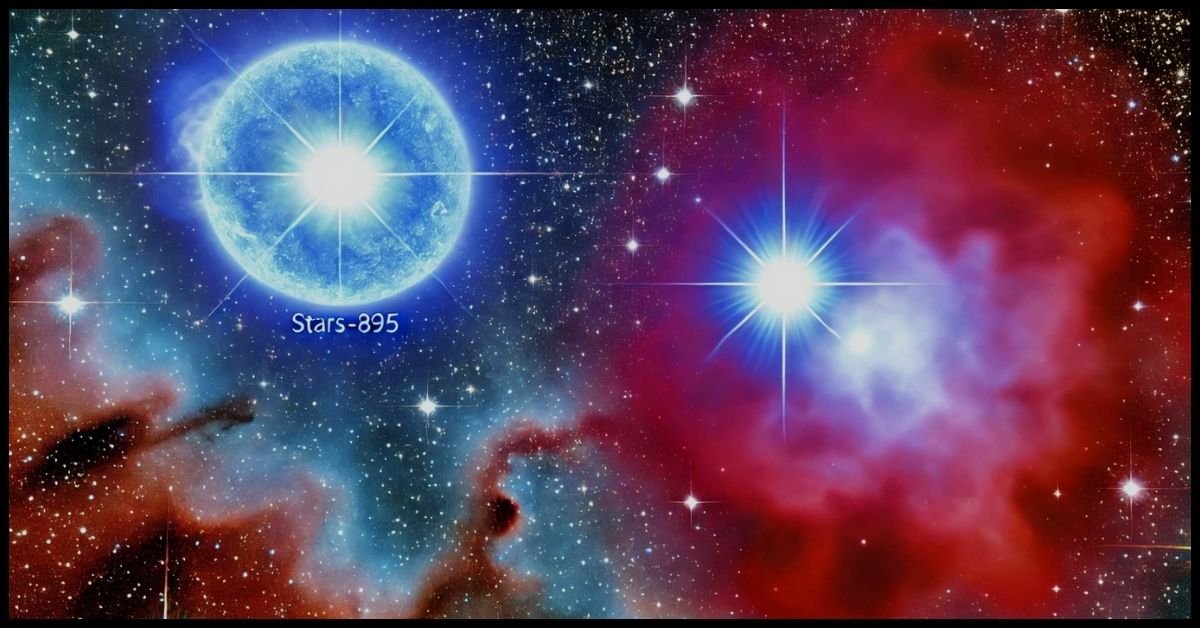Stars-895 has become one of modern astronomy studies’ most captivating celestial bodies. Its unique behaviors and properties offer crucial insights into stellar evolution and the vast universe surrounding us. This article will dive deep into the enigma of Stars-895, explaining its significance, scientific mysteries, and the ongoing research that seeks to uncover its secrets.
Contents
What Is Stars-895?
Stars-895 is a remarkable star that has drawn the attention of scientists worldwide. It is not just any ordinary star located millions of light-years from Earth. What makes Stars-895 unique are its extraordinary characteristics, such as unusual brightness variations and an intriguing chemical composition that continue to baffle astronomers.
The Discovery of Stars-895
The star was discovered with the help of advanced telescopic technology, made possible through international collaborations among astronomers. It gained prominence due to irregular light emissions, which set it apart from typical stars. These emissions indicated it might be part of a binary system, where a companion star influences its behavior, adding layers of complexity to its study.
Unique Characteristics of Stars-895
Understanding what makes Stars-895 different from other stars is critical to appreciating its cosmic significance. Below are some of its most notable features:
Irregular Light Patterns
- Stars-895 emit light in an inconsistent pattern, making it an ideal candidate for studies on binary systems. Variations in brightness may be caused by a nearby companion star or another unknown factor.
High Radiation Levels
- It emits unusually high levels of radiation. This is significant as it provides clues about the processes occurring within the star and has sparked interest in its potential evolutionary path.
Chemical Composition
- Unlike most stars, composed mainly of hydrogen and helium, Stars-895 has been found to contain heavier elements like carbon and iron. This anomaly suggests complex nuclear reactions occurring in its core.
Stellar Winds
- The star generates powerful stellar winds of charged particles that influence nearby space environments. These winds impact any potential surrounding planetary systems, shaping the cosmic landscape around the star.
The Role of Stars-895 in Stellar Evolution
Stars, including Stars-895, have life cycles that span billions of years. Studying Stars-895 helps scientists better understand stellar evolution, as it appears to be in a unique phase. The star’s lifecycle involves:
- Main Sequence Phase: Stars-895 fuses hydrogen in its core, producing energy and light.
- Red Giant Stage: It will eventually expand as its hydrogen runs out, beginning to fuse helium into heavier elements.
- End of Life: The star will shed its outer layers, leaving a dense white dwarf core behind.
Understanding these processes sheds light on how stars evolve and interact within the galaxy.
Scientific Significance
- Studying Stellar Evolution
- Stars-895 provides valuable data on how stars develop and decay. This helps refine current models of stellar evolution and predict the behaviors of other stars.
- Mapping Cosmic Distances
- The star is used as a reference point in parallax measurements, helping map out the structure of our galaxy and gauge distances between celestial objects.
- Potential Exoplanets
- Researchers are exploring the possibility that Stars-895 could host orbiting exoplanets. Changes in the star’s light spectrum may indicate planetary bodies, offering clues about planetary formation and habitability.
Observing Stars-895
While Stars-895 cannot be seen with the naked eye, amateur astronomers can observe it using high-powered telescopes. Here’s how you can view it:
- Equipment Needed: A telescope with at least an 8-inch aperture.
- Optimal Viewing Conditions: Clear, dark skies away from city lights.
- Using Star Charts: Star charts or apps can help locate Stars-895, making the process easier.
Phases in the Life Cycle of Stars-895
| Stage | Description |
|---|---|
| Main Sequence | The star fuses hydrogen into helium, shining brightly. |
| Red Giant | It expands as hydrogen runs out, fusing helium. |
| Planetary Nebula | Outer layers are shed, forming a nebula. |
| White Dwarf | The star cools and fades, marking the end of its life. |
Frequently Asked Questions
What is Stars-895?
Stars-895 is a unique star known for its irregular light patterns and complex composition, situated millions of light-years away.
Why does Stars-895’s brightness change?
Scientists believe a companion object or internal stellar processes could cause these variations.
What makes Stars-895’s chemical composition unique?
It contains heavy elements like carbon and iron, which are unusual compared to typical stars.
Can Stars-895 host exoplanets?
Research is ongoing, but scientists hope to find exoplanets around it based on light spectrum analysis.
Why are stellar winds from Stars-895 significant?
These winds shape the surrounding space environment, influencing potential planetary formation.
How do scientists study Stars-895?
They use spectroscopy to analyze its light, telescopic imaging, and simulations to understand its behavior.
What can Stars-895 teach us about stellar evolution?
It provides insights into the different stages of a star’s life, from main sequence to white dwarf.
Will Stars-895 become a supernova?
Current models suggest it will end as a white dwarf, not a supernova, but more research is needed.
Conclusion
Stars-895 remains a puzzle, challenging our understanding of stellar phenomena. By studying this star, scientists continue to gain insights into the cosmos, unlocking secrets of the universe one observation at a time. The future promises even more exciting discoveries as advanced technologies and collaborative efforts drive our exploration forward.


